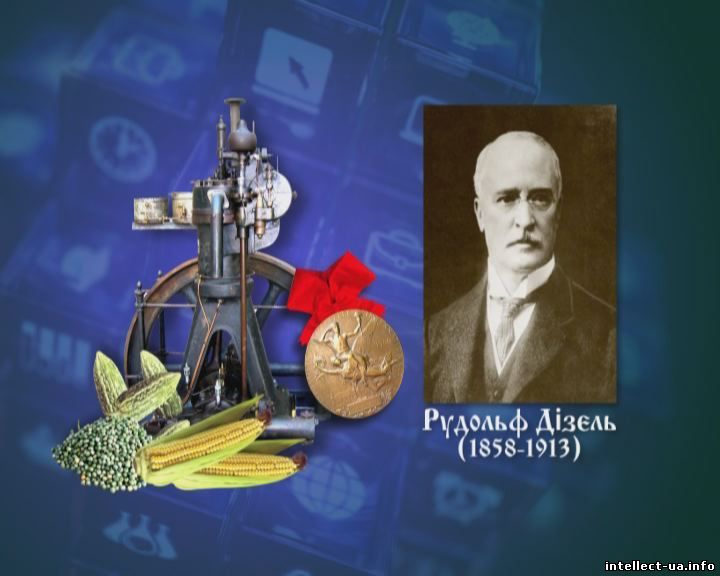Mass Media
When will Ukraine change to biofuels?
14.10.2014
 Today, adding bioethanol to gasoline is in the list of the hottest topics. The reason is that, in spite of the introduction of amendments to some laws of Ukraine on the production and use of motor fuels containing biological components, for the majority of the market players fuel ethanol and other biological components as well as the standards for handling them, are a dark horse. The television project "Intellect.UA" on the air of Channel 5 tried to make sense of the existing types of biofuels – both completely innovative and widely known in the world community. The employees of our company have been interviewed, in particular, I.V. Shchutskiy, General Director of Techinservice and V.P. Melnichuk, Production Engineer of Bioenergy Department.
Today, adding bioethanol to gasoline is in the list of the hottest topics. The reason is that, in spite of the introduction of amendments to some laws of Ukraine on the production and use of motor fuels containing biological components, for the majority of the market players fuel ethanol and other biological components as well as the standards for handling them, are a dark horse. The television project "Intellect.UA" on the air of Channel 5 tried to make sense of the existing types of biofuels – both completely innovative and widely known in the world community. The employees of our company have been interviewed, in particular, I.V. Shchutskiy, General Director of Techinservice and V.P. Melnichuk, Production Engineer of Bioenergy Department.
The following is a translation of an article posted on the site http://intellect-ua.info
 When will Ukraine change to biofuels?
When will Ukraine change to biofuels?
Every morning Igor, a driver, drinks coffee – double Espresso, for which 14 g of coffee beans are used. Now, he says, it's time to fill in his car. The car was fueled not with regular gasoline, but with the 95E biofuel, produced not from petroleum, but from rapeseed oil. 40 liters of biofuel were filled in the tank. For its production 100 kg of rapeseed were used.
Igor, a driver:
"I have already been using the 95 Premium biological gasoline for half a year. I found it accidentally: I was driving along the Obukhov highway, there were two fuel stations and I was suggested to try a new fuel type and I fueled it in my car. I liked it. The matter is that my car, i.e. the engine of my car began to work better, quieter, at least. Fuel consumption has decreased. And the price is much lower – it is cheaper than the 92 fuel on about a hryvnia."

Igor like other drivers learned about biofuel accidentally. They we attracted by a price – one liter costs 9 hryvnia 39 kopiykas, that is one hryvnia 50 kopiykas cheaper than the currently popular 95 gasoline. But the Ukrainian vehicles are fueled with such a fuel rarely. It is lack of fuel stations, which would sell biogasoline produced on the basis of ethyl alcohol. There is only one such fuel station in the capital!
Aleksandr, a driver:
"I use this gasoline for quite a long period of time – about a year. It is difficult to find it, because its amount is not enough at fuel stations, but the gasoline is very good, cheap; the consumption is small — well, most cost-effective than regular gasoline, because now, as a rule, the gasoline is diluted, and here all is clear, and it does not smell."

"According to the customers, the gasoline is good, nobody complains. The consumption decreases, it removes carbon deposits and plugs are clean. About 70% of our customers fill in their vehicles with this fuel."
The modern types of biofuels are mixtures of ethanol and gasoline as well as oil and diesel. They have a low content of aromatic hydrocarbons and are characterized by a low combustion temperature that reduces the heat load, and therefore, the engine wears less.
Igor Shchutskiy, Director of Techinservice:

"Fuel with bioethanol content at the rate of 35 percent has 12 percent of oxygen in it, so it is necessary to take less amount of oxygen from the air of the fuel system, so the amount of air which passes through the cylinder is less, and the caloric content of the fuel mixture is the similar or even better than regular fuel has. This suggests that the engine does not consume excess fuel to achieve that capacity the driver wants at the moment."
For most drivers vegetable gasoline or diesel is a wonder. And few are aware that at first vehicles used only biofuel. It was oil which was used for the first engine by Rudolf Diesel which was launched in the German city of Augsburg in 1893. And in 1900, he received the highest award at the Exposition Universelle in Paris. The inventor believed that the engine would use a fuel made from the agricultural products.
 First methyl esters were obtained from oils by scientists Eddie Duffy and John Patrick in 1853. The Austrian farmers became the pioneers in the production of biofuels. In 1987, they began a pilot project for the production of biodiesel, having formed a cooperative SEEG MURECK in the Austrian region of South Styria. In 2005, the volume of its commercial capacity was already 10 mln liters.
First methyl esters were obtained from oils by scientists Eddie Duffy and John Patrick in 1853. The Austrian farmers became the pioneers in the production of biofuels. In 1987, they began a pilot project for the production of biodiesel, having formed a cooperative SEEG MURECK in the Austrian region of South Styria. In 2005, the volume of its commercial capacity was already 10 mln liters.
The first vehicles of Henry Ford used only ethyl alcohol as a fuel. And even the famous mass Model T, released later, namely in 1908, could be refueled with alcohol or gasoline at choice. Henry Ford believed in biofuel so much that even built the huge spirits distillery.
Igor Shchutskiy, Director of Techinservice:
"If we recall the beginning of the last century, during the entire First World War bioethanol and ethanol was used as a fuel for vehicles. All the vehicles used spirits as a fuel. At that time gasoline was known as a medicine and was sold at a drug store. And only in the early 20s of the last century, oil refining and gasoline production began heavily."
These days the world goes back to the once forgotten products. But now each company creates its own recipe for biofuels according to different technologies. Because there are no common standards for its production up to now.
Igor Shchutskiy, Director of Techinservice:
"Ukraine, as a country with colossal agricultural opportunities, can very widely adopt this experience and use biofuel more intensely in internal combustion engines. All these programs are mainly supported by the state in legislative terms – now a number of laws have been issued that really regulate the production of biofuels."
 And indeed, although there is still no common standard for biofuels, the Verkhovna Rada has decided that it is necessary to gradually transfer vehicles to it. Next year, producers can already add 5 percent of ethanol to gasoline at their discretion. But in 2014 they will be obliged to do this. In two years, its content in the fuel should increase up to 7 percent. The use of ethanol will allegedly lead to a decrease in gasoline imports by almost two million tons. And this is a relief for the environment. In the meantime, most drivers still worry if a new "drink" does not damage the engines in vehicles. The experts explain that it will not suit for many foreign vehicles. But some Japanese producers assure: it is provided that it is possible to fill in gasoline with 10 percent content of ethanol in their vehicles.
And indeed, although there is still no common standard for biofuels, the Verkhovna Rada has decided that it is necessary to gradually transfer vehicles to it. Next year, producers can already add 5 percent of ethanol to gasoline at their discretion. But in 2014 they will be obliged to do this. In two years, its content in the fuel should increase up to 7 percent. The use of ethanol will allegedly lead to a decrease in gasoline imports by almost two million tons. And this is a relief for the environment. In the meantime, most drivers still worry if a new "drink" does not damage the engines in vehicles. The experts explain that it will not suit for many foreign vehicles. But some Japanese producers assure: it is provided that it is possible to fill in gasoline with 10 percent content of ethanol in their vehicles.
And this has been checked practically.
Vladimir Melnichuk, Production Engineer of Bioenergy Department of Techinservice:
 "Two cars were purchased: Daewoo Lanos as a budget car and Mitsubishi Lancer. These cars have been using this fuel for 2 years, and we have not seen any obvious signs of wear of any parts or seals".
"Two cars were purchased: Daewoo Lanos as a budget car and Mitsubishi Lancer. These cars have been using this fuel for 2 years, and we have not seen any obvious signs of wear of any parts or seals".
And the agricultural vehicles widely use biofuel. Many farmers prepare it directly at their sites. Some of them have been preparing it for a long time. The hooch still is used to get the first-quality product. Then it is distilled several times to bring the concentration up to 96 degrees. The obtained product is ethanol. Such fuel is used for both mopeds and Zhiguli. People say that ethanol is better for their vehicles than regular gasoline, which is rarely of high quality now. By the way, they said that they use sugar beet or apples to get the first quality product. But the main thing is profitability."
Notes of Techinservice:
The 95E biofuel is produced from a mixture of ethanol and gasoline, and not from a mixture of diesel and rapeseed oil.
The E35 fuel contains up to 35% of bioethanol and can be produced from many raw materials, such as by-products of sugar production as well as from plant crops such as corn, sugarcane, rice and many others, but not from rapeseed oil.

